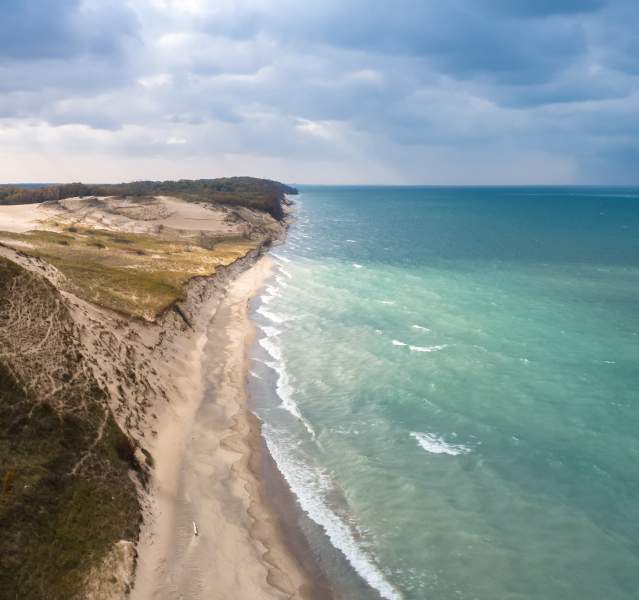My six-month stint as a seasonal Restoration Management Assistant at Kankakee Sands has come to an end. During the past six months, I’ve experienced so much. One memory that stands out was a July day on the prairie. We were working on creating trails for the Bison Overlook Area at Kankakee Sands in Unit K, west of the Kankakee Sands office.
Suddenly, a bright, fire-engine red caught my eye. It was a cardinal flower, which I had never seen before, but now I couldn’t take my eyes off of it.

- You can't miss the incredible red color of the Cardinal Flower when you visit Kankakee Sands.
The Cardinal flower (Lobelia cardinalis) was named after the Flemish botanist Mathias de l'Obel (1538 - 1616), who wrote under a different name Lobelius. The plant’s common name did not come from our native bird (the cardinal) but from the scarlet robes worn by high-ranking officials of the Roman Catholic Church.
The Cardinal flower is a perennial, which means that it lives for more than two years. The alternate leaves are toothed and pointed at both ends. The flowers are tube-shaped and very attractive. The upper petal of the flower is two-lobed, and the lower petal is divided into three parts. Extending up and over all of the petals is a long filament tube that contains the anthers and pollen. The seeds form in a two-celled, many-seeded capsule. Though the seeds are small, there are many.
The seeds will germinate if they fall on moist soil. At Kankakee Sands, the cardinal flower grows well in our wet prairies in Unit L and Unit K. It also grows well in the ditches along the Kankakee Sands roadsides. And because it is an important food and seed source for birds and insects, we grow it at the Kankakee Sands Native Plant Nursery in order to have enough seeds for our restoration plantings.
Hummingbirds especially like this flower because they are attracted to the color red. Hummingbirds have long, grooved, forked tongues that can lick nectar from the bases of long, tubular flowers. Hummingbirds are especially helpful to cardinal flowers for pollination because the top of a hummingbird’s head comes in contact with the flower’s reproductive parts. The hummingbird’s head will brush against the hairs at the end of the stigma and receive a dusting of pollen. Then the pollen is transferred to the style as it takes its next drink of nectar. And thus, the flower is pollinated.
Many Native American tribes had uses for the cardinal flower. The Delaware used a mixture of the roots to treat typhoid. The Iroquois had many medicinal uses for the cardinal flower. They boiled the root and mixed it with the root of chicory (Cichorium intybus) and the liquid was used to treat fever sores. The mashed root, stems, leaves, and blossoms were made into an elixir to help with cramps. The cardinal flower was often used as a vomit inducer for an upset stomach from eating something terrible. The plant was added to other medicines to give them more strength. The Meskwaki used this plant as a ritual tobacco, throwing it to the winds to ward off a storm. The Pawnee used the roots and flowers of the cardinal flower to make a love potion.
When I long to see bison on the prairie and cardinal flowers in bloom, I will come back to Kankakee Sands next year during the summer months. I am looking forward to it already!
The Nature Conservancy’s Kankakee Sands is 10,000 acres of prairie and savanna habitat in Northwest Indiana and Northeast Illinois, open every day of the year for public enjoyment. The Nature Conservancy in an international, non-profit organization. For more information about Kankakee Sands, visit www.nature.org/KankakeeSands or call the office at 219-285-2184.

